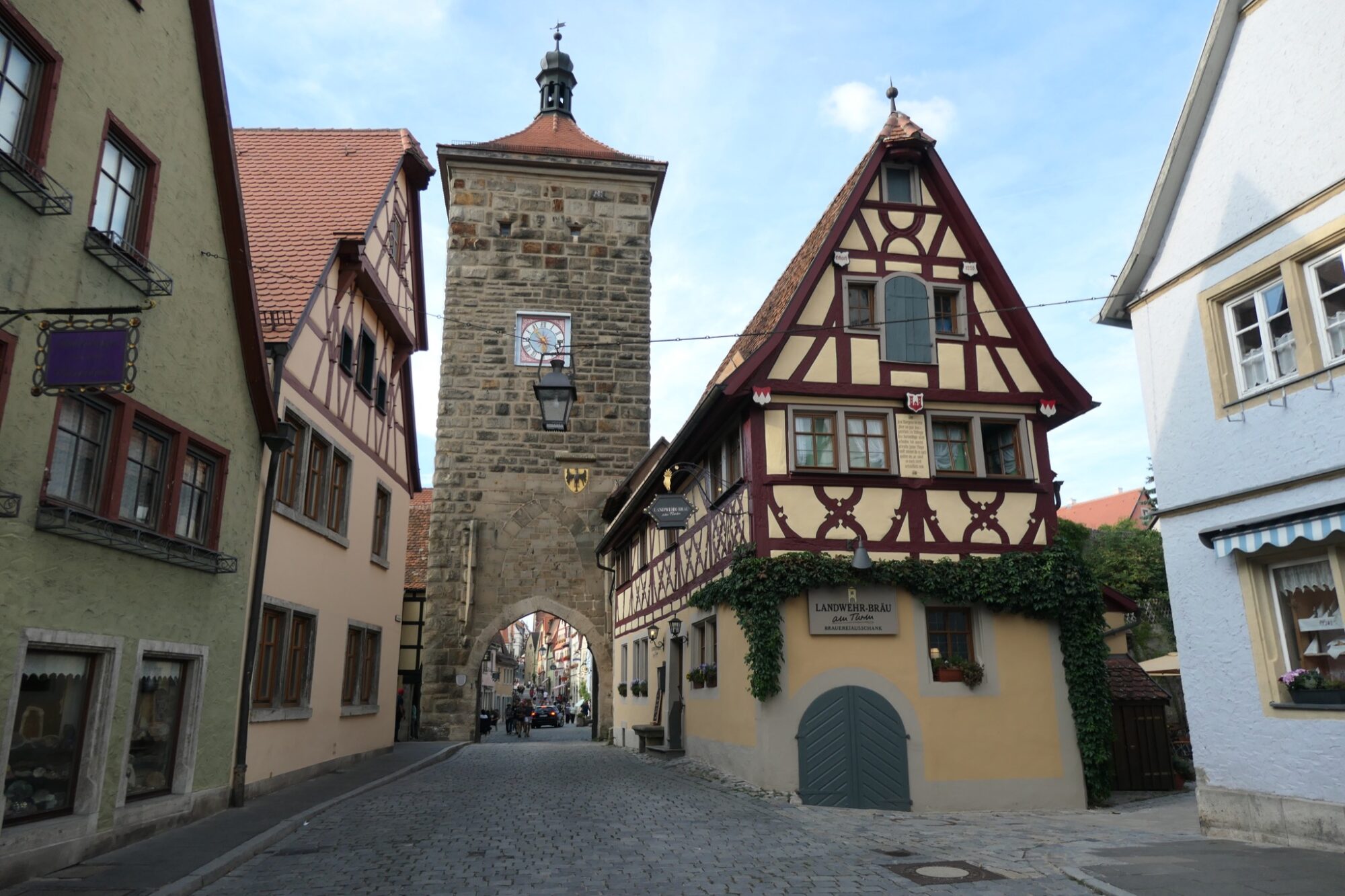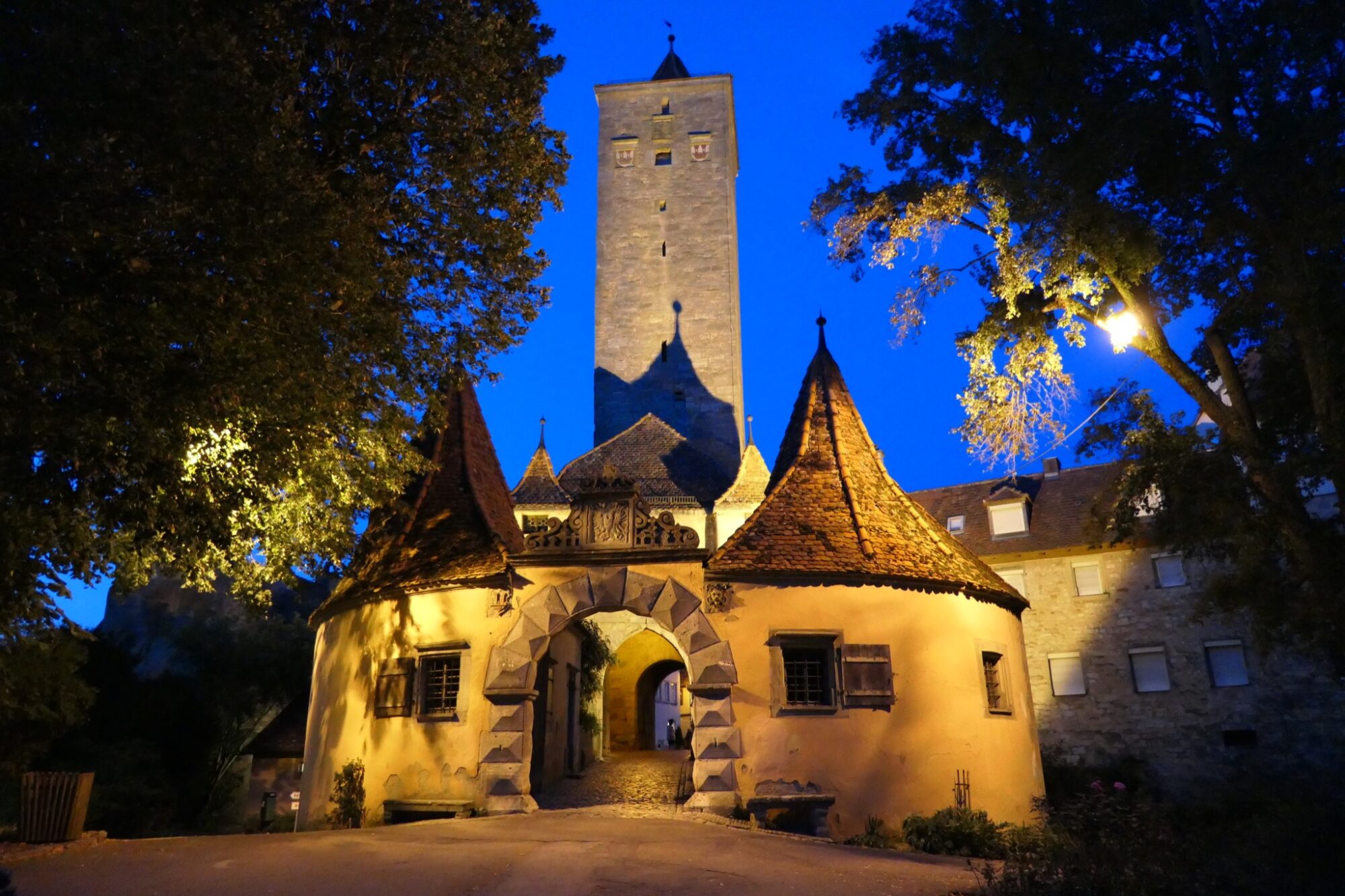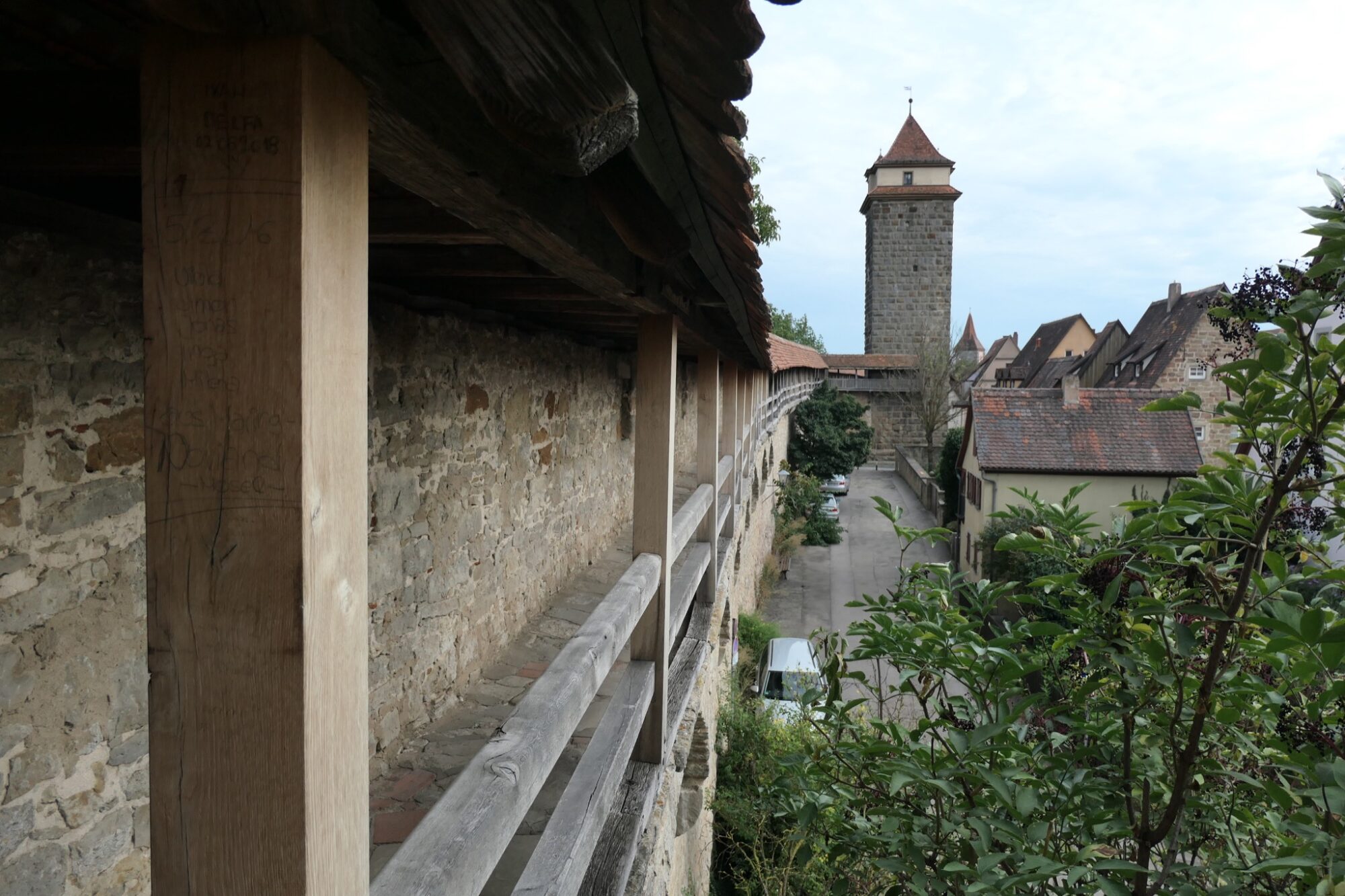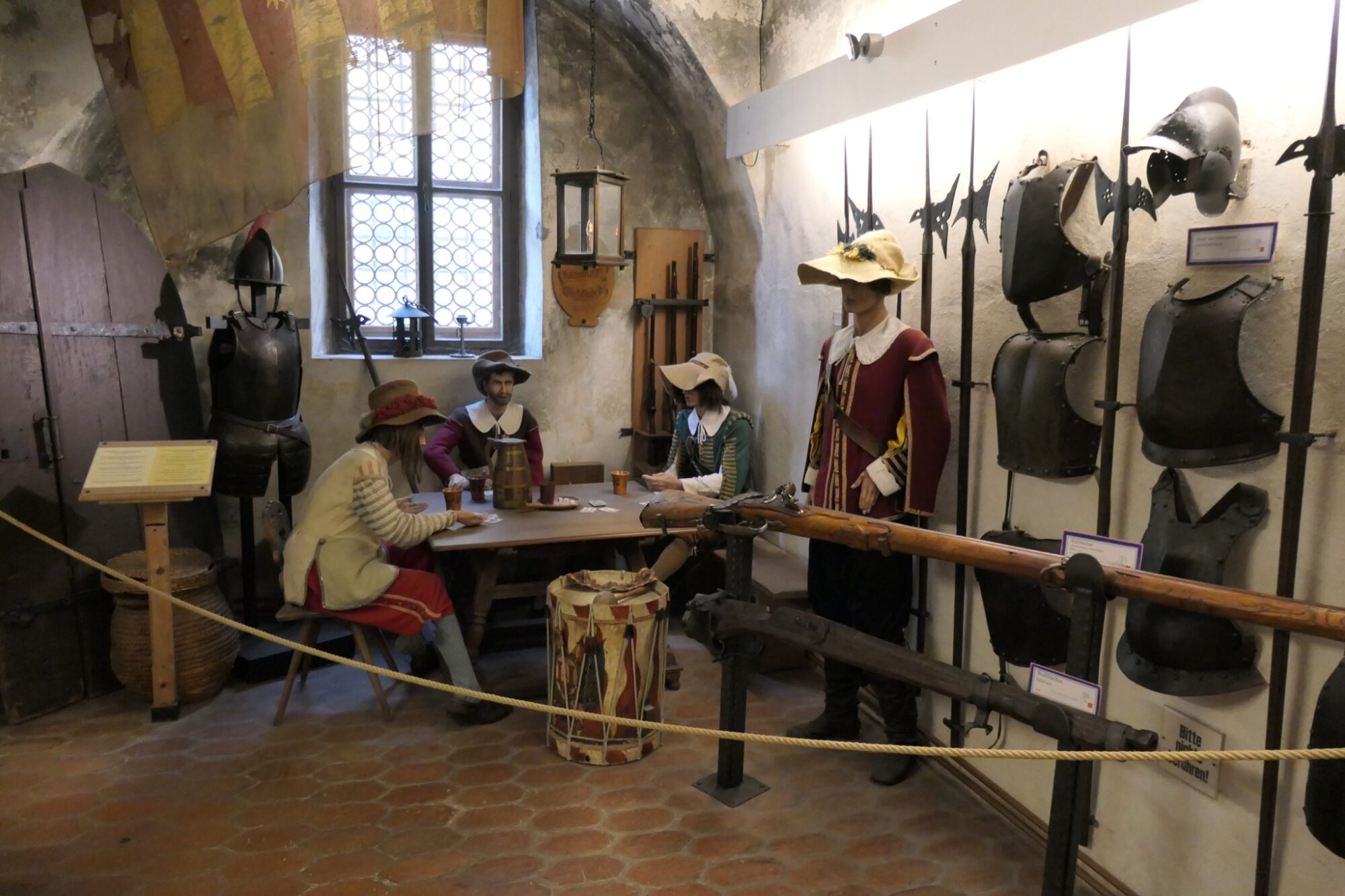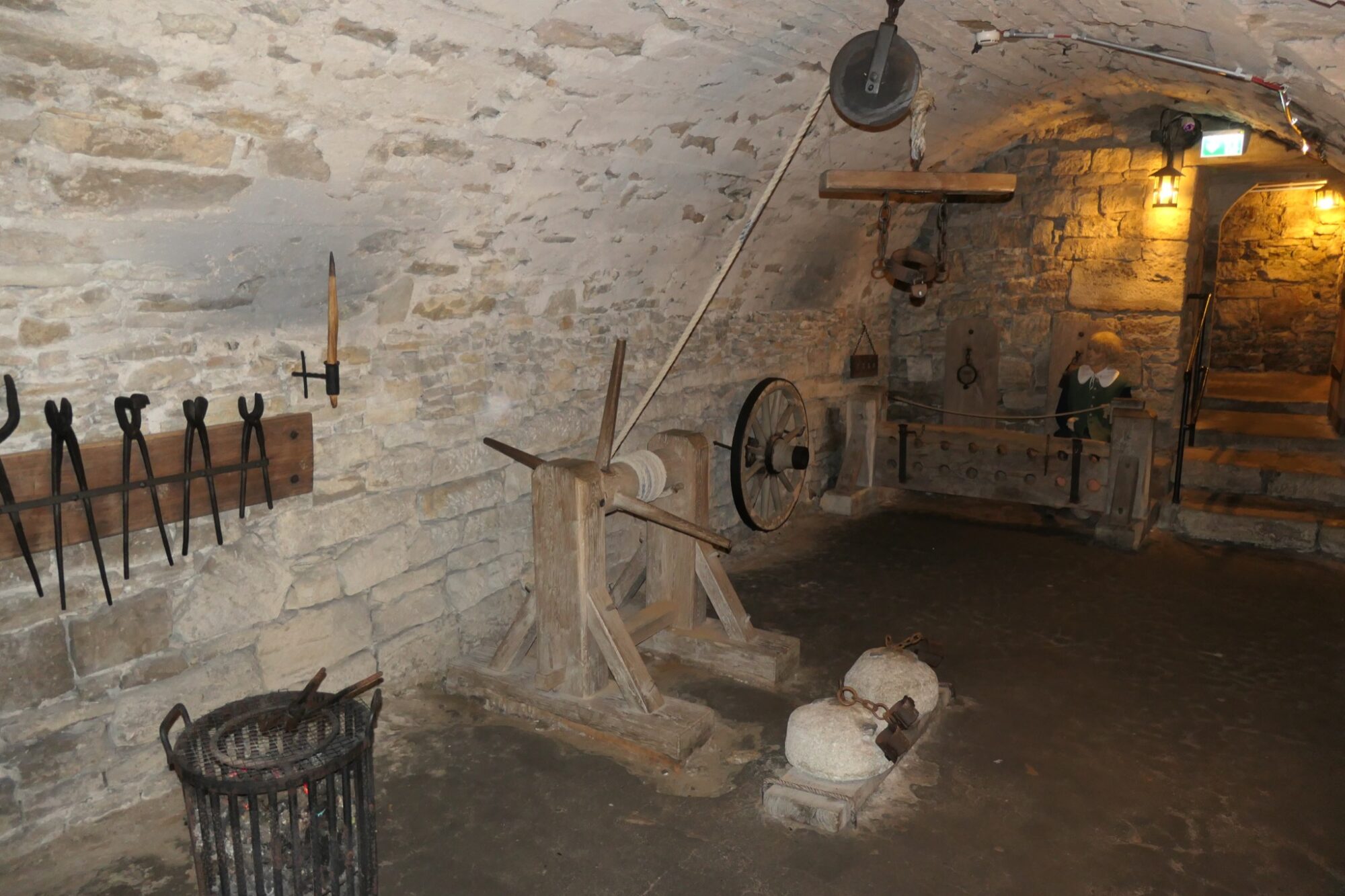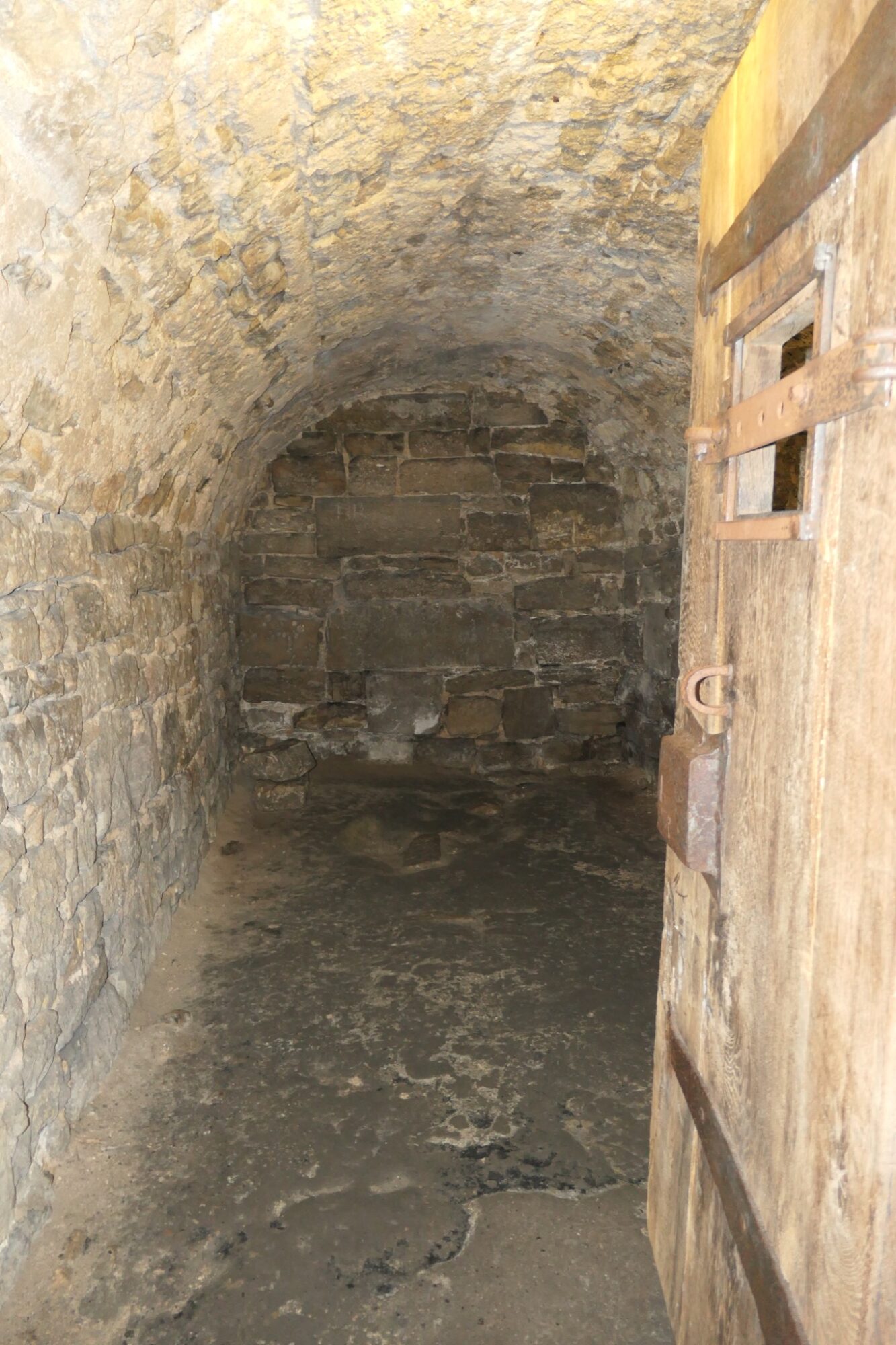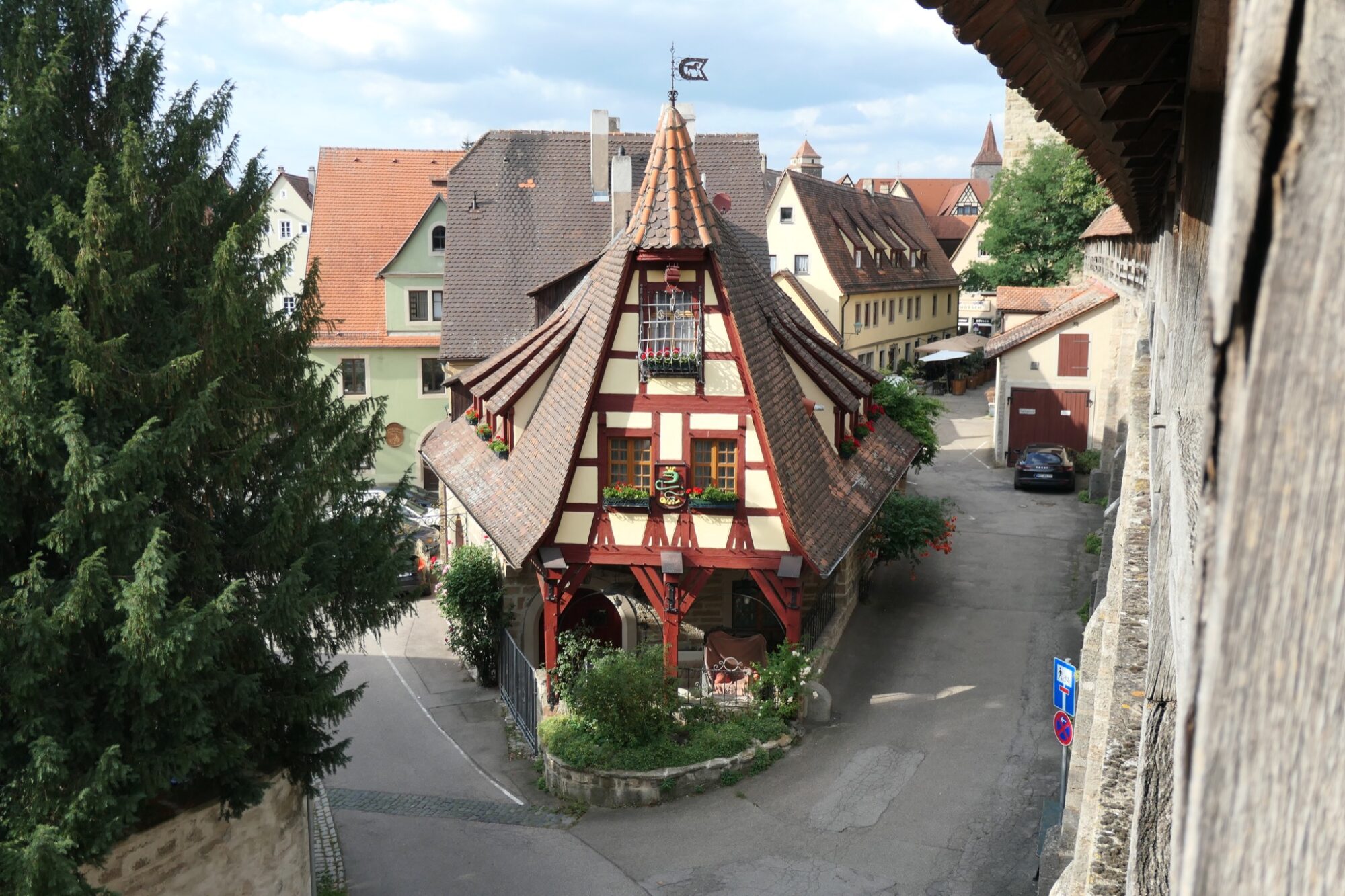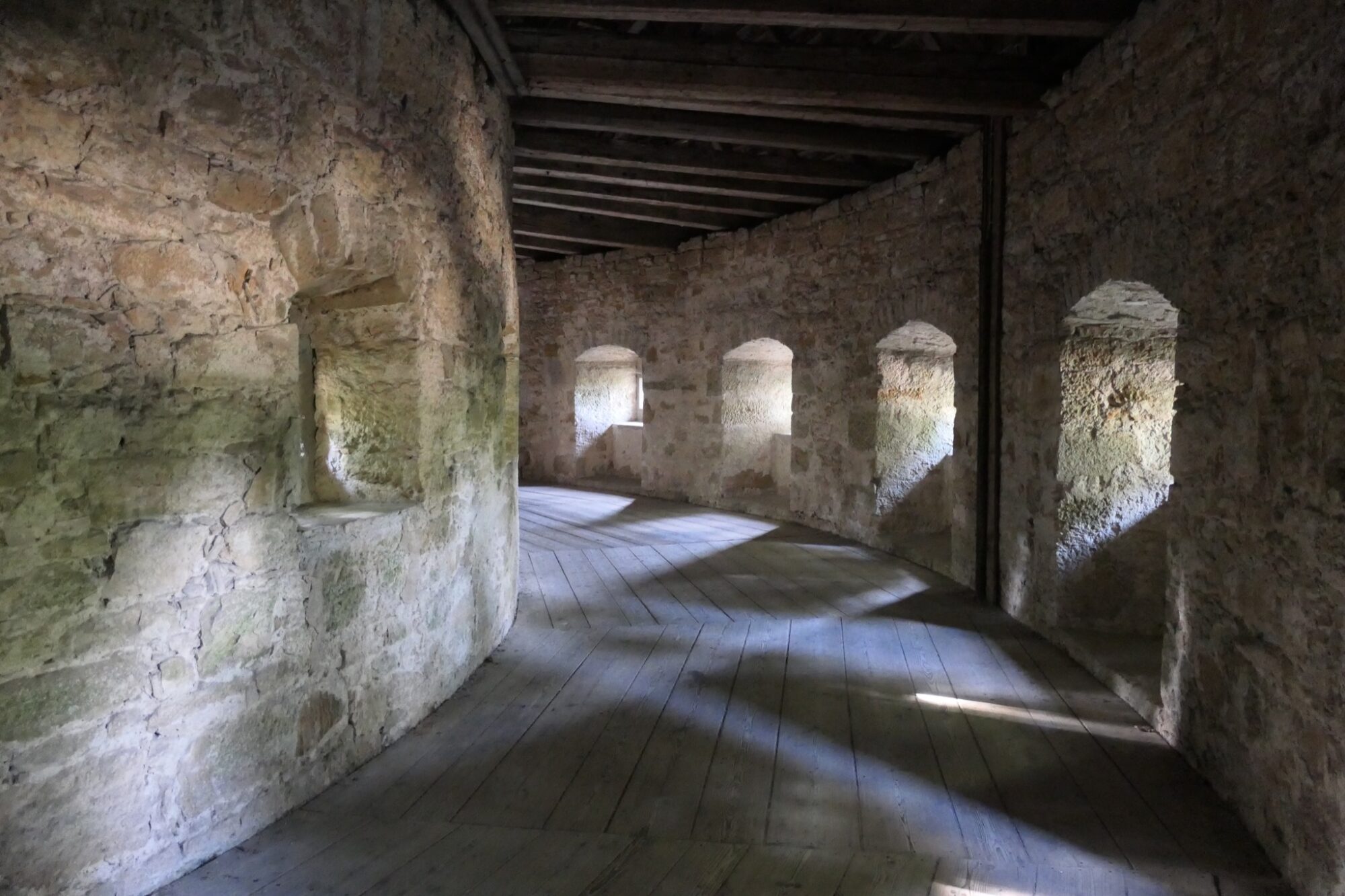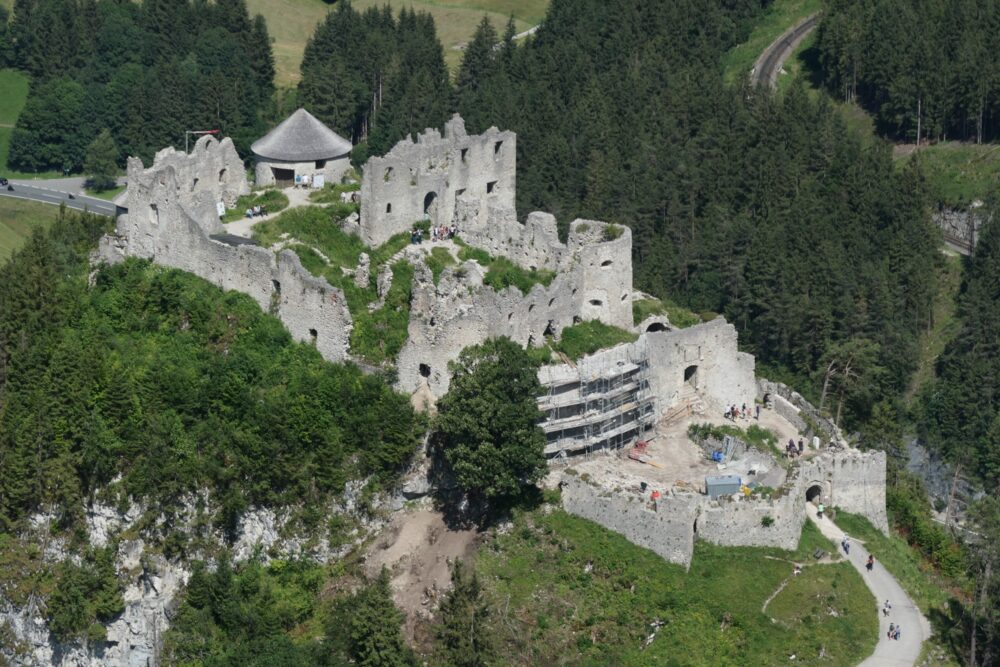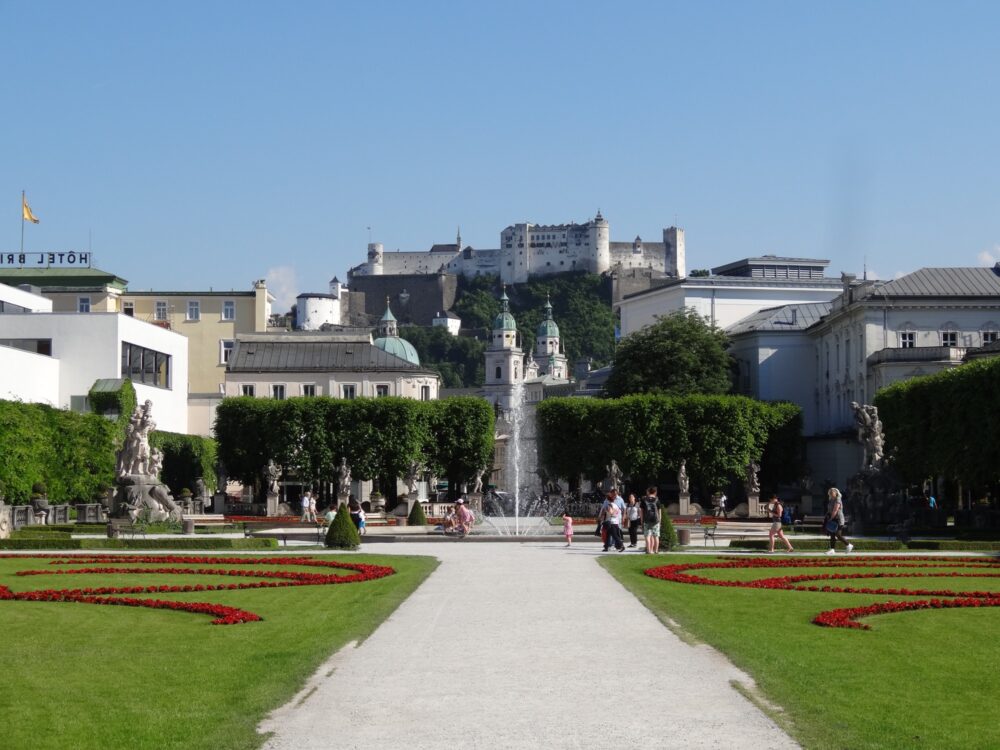Rothenburg ob der Tauber
In the years around 1400, Rothenburg ob der Tauber was one of the wealthiest towns in the world. This is the story of Heinrich Toppler and how he and Rothenburg rose.
But let’s first start with a quick recap about how life was like in a German city during the late middle ages, an epoch between ca. 1250-1500:
Tip of the day: Click on a photo to see details about it.
And don’t forget to connect on Reddit, Pinterest or Twitter.
Cities in the Late Middle Ages
Around the year 1400, an average sized imperial city had a population of about 5000 people. Towns usually did not expand outside their city walls. (Dinkelsbühl and Schwäbisch Hall were two exceptions.)
Waste and excrement were disposed of on the street. Rivers inside towns were polluted to a degree that drinking the water from them would have made you severly sick. Hygiene was at a low point. Cities were dirty and stinky.
The middle ages were a filthy epoch. An ideal breeding ground for diseases, which killed humans by the masses. Life expectation was ca. 35 years. People were considered adults at an age between 14 and 16 years.
Countryside
Life wasn’t much better in the countryside: Diseases decreased the population. Demand for agricultural goods was low. So were there market values. The landed gentry could barely sell their wares.
Many of the lower nobles were indebted and earned some extra money as robber barons. Bad for the merchants and the towns. But Heinrich Toppler was about to change that. For quite some profit, as you’ll see.
Heinrich Toppler
Heinrich Toppler came from a wealthy merchant family. His exact year of birth is unknown. According to two entries in Rothenburg’s District Court Book, he was underage in September 1364 and of legal age in July 1365. Hence he must have been born around 1349/1350.
In 1373 he was elected mayor of Rothenburg for the first time. So again between 1384 and 1403.
The Rise of Rothenburg
Toppler understood that robber barons were bad for business.
As the major of Rothenburg he bought the lands from the indebted landed gentry and had their castles razed. This made the roads safer for merchants and caused Rothenburg to expand from an average sized city to an area of 400 square kilometers.
Toppler also made a nice profit out of it. Among his possessions were 327 agricultural properties, including 42 farms, 11 ponds and 7 mills.
His ambitions and his wealth, earned him respect but also enemies.
Rothenburg’s Enemies
Two of Topplers opponents were the Bishop of Würzburg and the burgrave of Nuremberg, Friedrich of Zollern. Both of them were enemies among each other, and Toppler used them to play them off against each other.
Rottenburg was massively expanding and a serious obstacle to Friedrich of Zollern’s expansion policy. The burgrave openly urged for war against Rothenburg. What made the situation even worse was that Friedrich of Zollern, was the brother in law of Rupert of the Palatinate, the King of Germany.
So Rothenburg had some mighty enemies.
Imperial Siege
In 1407 the Nuremberg burgrave, the Bishop of Würzburg and a contingent of nobles joined forces to besiege Rothenburg.
Topler, however, saw it coming and Rothenburg was well prepared for the imperial siege. In February 1408, the siege’s expenses were no longer bearable, forcing the holy roman empire to press for peace.
Rothenburg won and it’s territory remained unchanged.
Heinrich Toppler’s fall
The city council wanted Toppler’s wealth to compensate for the war losses. They had a simple but effective plan:
Sacrificing Toppler to his enemies King Rupert and burgrave Friedrich. Toppler got arrested on 30th march 1408. He died two months later in the city’s dungeon without an official trial.
The exact cause of death remains a mystery. Some people believe he got beheaded, but that’s rather unlikely considering that executions were expensive, and the costs for an execution would have been recorded in the city’s expenses.
Some others believe that he was simply starved to death in his prison cell. Sounds more plausible, but… Considering that:
- The life expectancy was about 35 years.
- Toppler was already around 60 years old.
- He was imprisoned in a cold, wet medieval dungeon cell for more than two months.
It could as well be that he died a natural death. This is, of course, my personal opinion. You’re privileged to judge by yourself.
After Toppler passed away, his wealth was split into three and given to the city of Rothenburg, the German King Rupert, and Topplers relatives.
Turns out that politics was, is, and will always be a filthy business.
The destruction of Rothenburg
Fast forward 537 years:
On March 31 1945, just five weeks plus two days before the end of WWII in Germany, Rottenburg got bombed. 306 houses and more than 600 meters of the city wall got destroyed.
However, the city got rebuilt in the same architectural style as it was before, making it very challenging to distinguish the original houses from the rebuilt ones.
Visit Rothenburg ob der Tauber
Be sure to allocate at least a full day to visit Rothenburg ob der Tauber. There’s a lot to see in this historical German town. Some of the highlights are:
- The historical vault, where you can see and enter Heinrich Topplers cell.
- RothenburgMuseum is a must visit for anybody interested in arms. It houses one of the largest weapon collections in Europe.
- The Medieval Crime and Justice Museum gives some great insights about the conceptions of crime and justice in the middle ages. Including the witch-hunt.
- A walk on the city wall is very much recommended.
- The Käthe Wohlfahrt Christmas Museum – a huge christmas themed museum and store is a very unique place.
- The guided city tour was pretty much awesome. The tour guide is dressed like a member of the medieval night watch.
Beside that, be sure to have a look at the official website of Rothenburg ob der Tauber.


